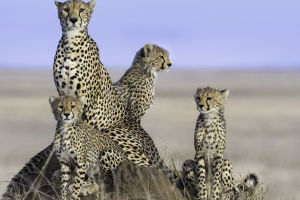Cats are carnivorous mammals. They have small bodies, ranging in color from blue-gray to tan, with slender builds, measuring about 0.3-0.5 meters in length.
Their fur is dense and soft, with small collarbones, short muzzles, round eyes, robust necks, short limbs, and several rounded pads on their feet; their tongues are covered in horny, filamentous, hook-shaped papillae.
Male and female cats resemble each other, with males having slightly larger heads.
As household pets, cats provide companionship, alleviate stress, and fulfill emotional needs. Moreover, their instinct to catch rodents helps prevent significant economic losses each year. Cat culture dates back to the early domestication of cats, when they were revered as "sacred animals" and were depicted with dual identities as both sun and moon deities in ancient Egyptian art.
Their charm, playfulness, and close bond with humans make them integral members of many families.
Cats communicate a range of emotions through rich body language. When they're happy, they may purr and knead with their front paws, reflecting subconscious behaviors from kittenhood. Some cats have a habit of jumping onto laps and engaging in these actions to win affection.
When a cat sits with its tail gently swaying, it's inviting you to play; if the tail thrashes, it's angry. Aside from expressing happiness, purring can indicate pain or discomfort; mother cats also purr during labor, and cats in severe distress may loudly vocalize.
When a cat welcomes you, it may arch its back, raise its tail, and rub against your legs, not only displaying affection but also marking you with scent from glands near its ears and tail.
However, there's often confusion about a cat's age compared to human years.
Cats reproduce throughout their lives, with a gestation period lasting several weeks and a lifespan of 12-17 years.
Generally, cats mature more quickly than humans. Their first year equates to the human late teen years, roughly 15 to 18 years old, characterized by curiosity, energy, and a desire for exploration, akin to human adolescents.
By the age of 2, a cat's body has matured, equivalent to around 24 human years. At this point, cats are more stable and mature in behavior but still retain some level of energy and curiosity, similar to young adults.
As cats age, the relationship between their age and human years isn't linear. Typically, each cat year is equivalent to 3 to 4 human years. Therefore, a 5-year-old cat is roughly equivalent to a human aged between 25 and 32. At this stage, cats may become more independent, exhibiting some characteristics of older cats, such as increased sleep needs and decreased activity.
When cats reach 10 years or older, significant changes in their physical condition and behavior may occur, akin to humans in their 50s, entering their senior years. Cats at this age may experience age-related conditions like arthritis and declining kidney function. Nonetheless, with proper nutrition, regular exercise, and ample rest, cats can maintain their health and slow the progression of aging.
Although a cat's age doesn't directly translate to human years, it doesn't diminish our affection and care for them.
May we cherish the wonderful moments spent with our feline companions, providing mutual support and love.


